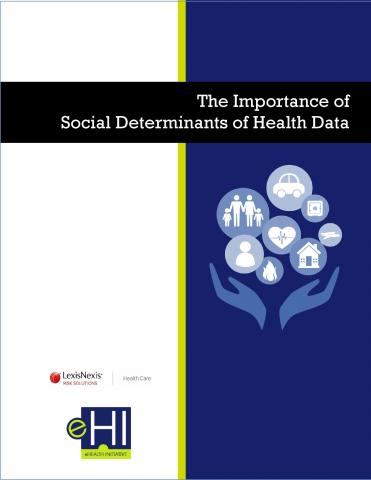ICD-10-CM Coding for Social Determinants of Health
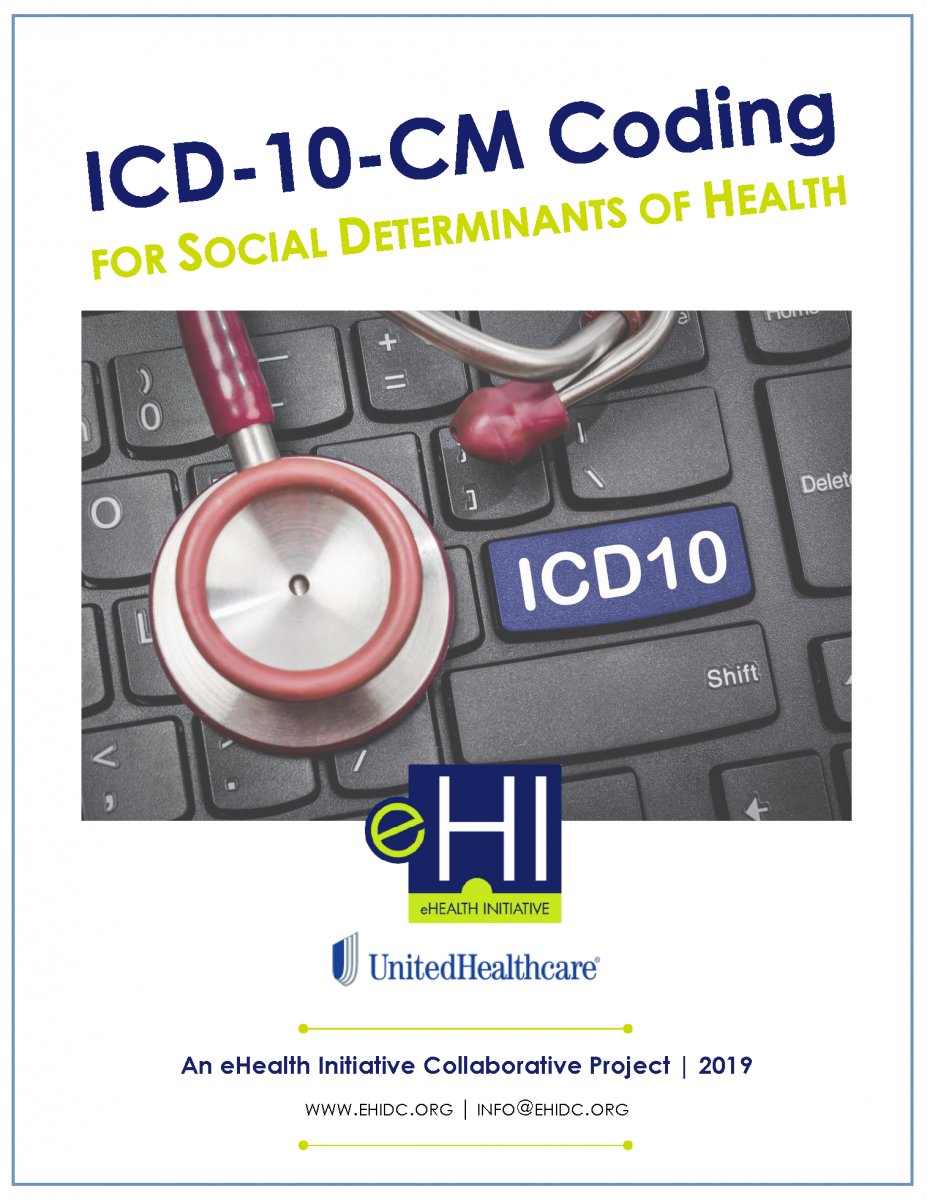 In Summer of 2019, eHealth Initiative and UnitedHealthcare’s National Strategic Partnerships Division convened a collaborative meeting of leaders from payer organizations and other stakeholder groups to address the use of ICD-10-CM codes for capturing social determinants of health (SDOH) data. This meeting marked a significant milestone in the shift to value-based care. Despite the competitive nature of healthcare, the private sector is working together to address factors pertinent to patient care and well-being in a sustainable, scalable manner. The group discussed the need for better education of provider and billing coders on the value of collecting and using SDOH data and identified strategies to accomplish this task:
In Summer of 2019, eHealth Initiative and UnitedHealthcare’s National Strategic Partnerships Division convened a collaborative meeting of leaders from payer organizations and other stakeholder groups to address the use of ICD-10-CM codes for capturing social determinants of health (SDOH) data. This meeting marked a significant milestone in the shift to value-based care. Despite the competitive nature of healthcare, the private sector is working together to address factors pertinent to patient care and well-being in a sustainable, scalable manner. The group discussed the need for better education of provider and billing coders on the value of collecting and using SDOH data and identified strategies to accomplish this task:
- Develop a consistent and unified approach to communicate and assist providers and coders in utilizing existing ICD-10-CM codes for SDOH.
- Formulate a strategy and unified approach for providers and coders to assist with adoption and utilization of the proposed SDOH codes once approved.
Attendees agreed that the best strategy to communicate and promote the adoption of ICD-10-CM codes for SDOH to various stakeholder audiences was to:
- Develop this document as well as two-page communication tools for various audiences, including providers and coders. The coder tool, Transforming health care: Why including SDOH codes on claims is critical and provider tool, Using SDOH coding to transform health outcomes are available for use.
- Promote the use of the communication tools at various payer organizations through a high-level communication plan that outlines dissemination to stakeholder groups.
For a brief overview on the topic, check out our eHI Explains ICD-10-CM Coding for SDOH. Links to the provider and coder documents are forthcoming.
The Futures of eHealth: Social, Ethical, and Legal Challenges
The Futures of eHealth: Social, Ethical, and Legal Challenges
Looking into the futures of eHealth? The title of this publication might seem quite presumptuous at first. Its objective, however, is to serve a much more modest purpose, in that it strives to take a look at potential, likely, desired, anticipated or feared futures of digital health technologies and practices. When analysing the opportunities and risks associated with them as well as the social, legal and ethical challenges they might pose, what we also see in the process are the expectations and promises projected onto them.
eHealth or “digital health”, according to the World Health Organization’s European Office, “involves a broad group of activities that use electronic means to deliver health-related information, resources and services: it is the use of information and communication technologies for health” (World Health Organization 2017). As far as current developments and technological solutions are concerned, the WHO has further identified the following areas:
- Electronic health records and interoperability of data;
- Mobile health or mHealth;
- Telehealth, where a patient can consult with a healthcare worker using Skype or even a regular telephone;
- Wearable technologies (fitness trackers, medical devices, etc.) and
- Technologies to support integrated care (WHO 2017).
Looking into the futures of anything always involves creating narratives. Rather unsurprisingly, the WHO’s definition characterises the role of technology use as entailing “strengthening health systems and health information systems” (World Health Organization 2017), a narrative of opportunity. These promises of eHealth are embedded in and reflective of much larger discourses that are often associated with (digital) technologies, which are mainly seen as a remedy to existing social problems. These discourses often centre around terms such as “empowerment”, “democratic potential”, “unifying cross-border force”, “special care for vulnerable groups” or “bridging distances”. And, indeed, there is an abundance of opportunities in digital health solutions that are directly associated with these technologies and practices.
The full paper can be downloaded below.
More than just friends: in-home use and design recommendations for sensing socially assistive robots (SARs) by older adults with depression
More than just friends: in-home use and design recommendations for sensing socially assistive robots (SARs) by older adults with depression
As healthcare turns its focus to preventative community-based interventions, there is increasing interest in using in-home technology to support this goal. This study evaluates the design and use of socially assistive robots (SARs) and sensors as in-home therapeutic support for older adults with depression. The seal-like SAR Paro, along with onboard and wearable sensors, was placed in the homes of 10 older adults diagnosed with clinical depression for one month. Design workshops were conducted before and after the in-home implementation with participating older adults and clinical care staff members. Workshops showed older adults and clinicians saw several potential uses for robots and sensors to support in-home depression care. Long-term in-home use of the robot allowed researchers and participants to situate desired robot features in specific practices and experiences of daily life, and some user requests for functionality changed due to extended use. Sensor data showed that participants’ attitudes toward and intention to use the robot were strongly correlated with particular Circadian patterns (afternoon and evening) of robot use. Sensor data also showed that those without pets interacted with Paro significantly more than those with pets, and survey data showed they had more positive attitudes toward the SAR. Companionship, while a desired capability, emerged as insufficient to engage many older adults in long-term use of SARs in their home.
The full article can be downloaded below.
Social and juristic challenges of artificial intelligence
Social and juristic challenges of artificial intelligence
Artificial intelligence is becoming seamlessly integrated into our everyday lives, augmenting our knowledge and capabilities in driving, avoiding traffic, finding friends, choosing the perfect movie, and even cooking a healthier meal. It also has a significant impact on many aspects of society and industry, ranging from scientific discovery, healthcare and medical diagnostics to smart cities, transport and sustainability. Within this 21st century ‘man meets machine’ reality unfolding, several social and juristic challenges emerge for which we are poorly prepared. We here review social dilemmas where individual interests are at odds with the interests of others, and where artificial intelligence might have a particularly hard time making the right decision. An example thereof is the well-known social dilemma of autonomous vehicles. We also review juristic challenges, with a focus on torts that are at least partly or seemingly due to artificial intelligence, resulting in the claimant suffering a loss or harm. Here the challenge is to determine who is legally liable, and to what extent. We conclude with an outlook and with a short set of guidelines for constructively mitigating described challenges.
The full article can be downloaded below.
Guiding Principles for Ethical Use of Social Determinants of Health Data
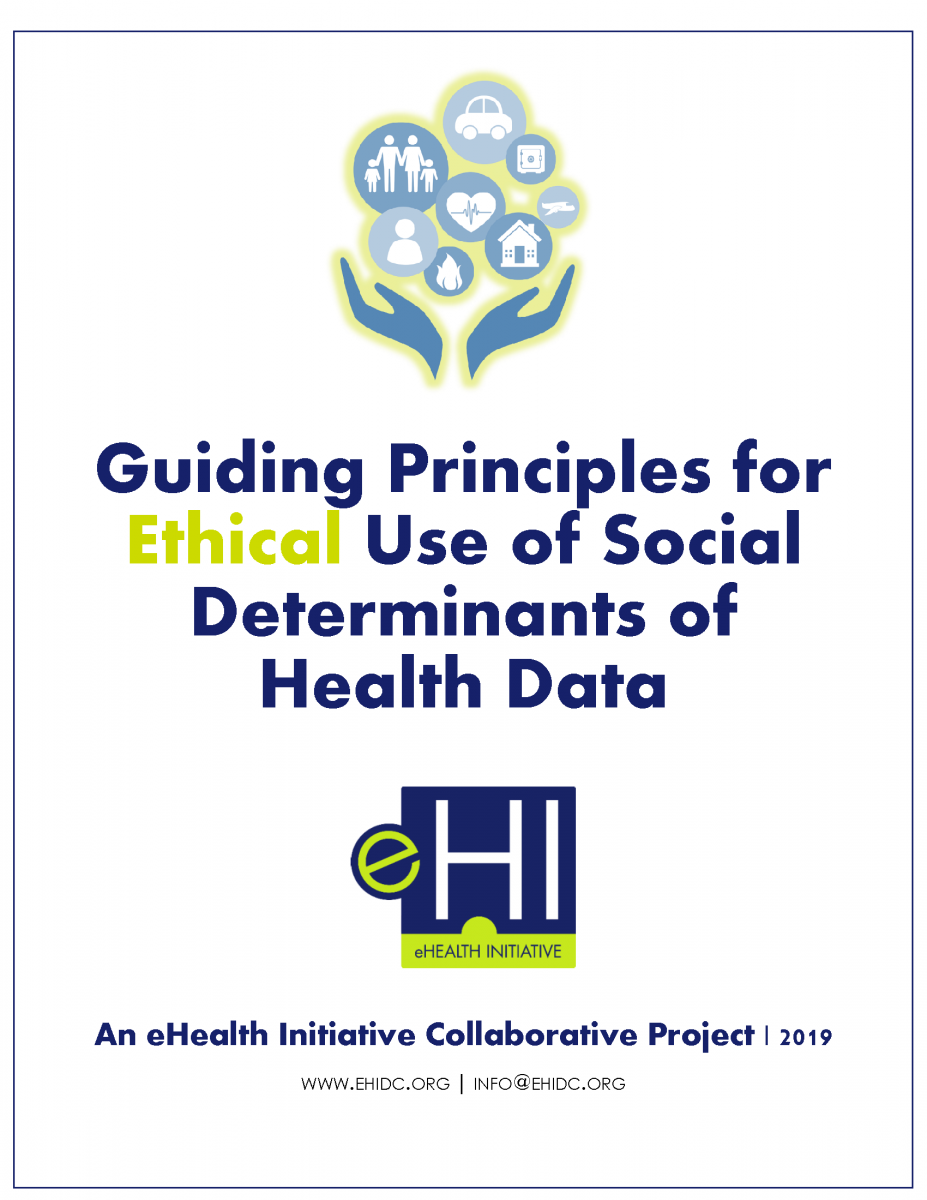 eHealth Initiative’s (eHI) Guiding Principles for Ethical Use of Social Determinants of Health Data offers guidance on the evolving matter of Social Determinants of Health (SDOH) and its related data use for healthcare purposes. Using SDOH is unchartered territory in both policy and practice. eHI puts forth an ethical framework for SDOH data, specifically five guiding principles in the areas of:
eHealth Initiative’s (eHI) Guiding Principles for Ethical Use of Social Determinants of Health Data offers guidance on the evolving matter of Social Determinants of Health (SDOH) and its related data use for healthcare purposes. Using SDOH is unchartered territory in both policy and practice. eHI puts forth an ethical framework for SDOH data, specifically five guiding principles in the areas of:
- Care Coordination
- Recognizing Risk Through SDOH Analytics
- Mapping Community Resources and Identifying Gaps
- Service and Impact Assessment
- Customizing Health Services and Interventions
The Guiding Principles for Ethical Use of Social Determinants of Health Data were developed as part of a SDOH collaborative. eHI is an independent, non-profit organization that convenes executives from various healthcare stakeholder groups to discuss, identify, and share best practices, which transform the delivery of healthcare. The work of the SDOH collaborative focused on educating and guiding industry stakeholders and policy makers on the value of leveraging SDOH data for maximum good in healthcare, while addressing SDOH privacy and security concerns.
Research on Social Determinants of Health
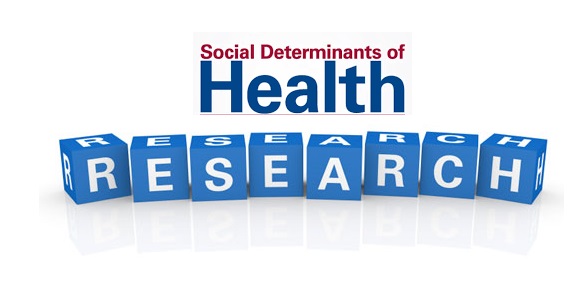
Organizations and researchers have recognized the impact of Social Determinants of Health (SDOH). Research and programs that evaluate and address the social, economic, and environmental factors that influence health are increasingly important and their relevance is demonstrable.
Examples of Payers Leveraging SDOH
- Gateway Health reported an average reduction of $2443 in second year medical expenditures for individuals who received coordinated referral services to address social needs. https://www.healthleadersmedia.com/finance/health-plan-addresses-social-issues-data
- Vermont Blueprint for Health demonstrated 21% reduction of inpatient use of services year over year, resulting in a 22% reduction in PMPM cost. ED use declined by 31%, reducing costs by 36%. Overall costs dropped by 11.6%.
- United Healthcare is investing $400mm in affordable housing. one state saw emergency room admissions drop 60 percent. Total cost of care was also 50 percent lower for individuals enrolled in a housing program. https://www.unitedhealthgroup.com/newsroom/2019/2019-03-26-uhc-affordable-housing-path-metro-villas.html
- Molina Healthcare opened a homeless members’ resource center to avoid emergency department use for nonmedical needs and launched a clinical setting — WellRx pilot in New Mexico — to screen patients for nonmedical social needs. https://www.healthedge.com/blog-social-determinants-health-what-are-payers-doing
Examples of Providers Leveraging SDOH
- Intermountain is investing $12 million to address issues like housing instability, utility needs and food insecurity
- Senior Care Options (Massachusetts) coordinates direct delivery of social support services for patients with chronic conditions and adults with disabilities reported hospital days per thousand were 45% less. 30% reduction in nursing home placements for eligible Medicaid beneficiaries. https://www.healthaffairs.org/doi/10.1377/hlthaff.2011.0113
- The Comprehensive Care Program high risk patient’s hospital use declined by 20% in 2 years. $2mm in cost savings for every 1000 members. https://www.healthaffairs.org/doi/10.1377/hlthaff.2011.0080
- High risk patients receiving care coordination at Mercy experience a 17% reduction in annual hospital readmission rates. Overall cost savings of $37.70 PMPM. https://www.healthaffairs.org/doi/full/10.1377/hlthaff.2010.1298
- Care Management Plus patients with diabetes saw 21% lower hospitalization from designated intervention and control clinics within Intermountain Health Care system. Use reductions with diabetes patients save $70,000 per clinic
- Sharp HealthCare Care Transitions Intervention Program empowers chronically ill adults discharged from the hospital to take an active role in their healthcare, reducing 30 day readmits from 12.6% to 2.3% in one year https://innovation.cms.gov/initiatives/CCTP/Round-4.html
- Kaiser Permanente’s “Total Health” framework addresses social determinants in neighborhoods and schools for health-promoting policy, system, and environmental changes. Kaiser Permanente is screening patients for unmet social needs to refer them to relevant resources in their communities. Data shows that 78% of those screened have one or more unmet social needs. https://catalyst.nejm.org/health-care-that-targets-unmet-social-needs/
- Montefiore Health System investing in housing, reducing emergency room visits and unnecessary hospitalizations for an annual 300% return on investment. https://www.healthcarefinancenews.com/news/what-montefiores-300-roi-social-determinants-investments-means-future-other-hospitals
General SDOH Resources from the eHealth Resource Center
- Roundtable Presentation: Putting Social Determinants of Health Into Action (AHIP)
- Roundtable Presentation: Social Determinants of Health- A Kaiser Permanente Perspective
- Presentation: States' Capacity for Using Social Determinants of Health Data for Population Health Management
- Toward Addressing Social Determinants of Health: A Health Care System Strategy
- Considerations for Success in Addressing Social Determinants of Health at the Individual Level
- Adoption and Use of Social-Behavioral Determinants of Health
- Creating a Conduit for Better Health: Technology Connects Medical and Social Services
- Effects of Social Needs Screening and In-Person Service Navigation on Child Health
- Webinar: Social Determinants: Alternative Drivers of Healthcare
- The top six myths about Social Determinants of Health
- America's Health Rankings: Annual Report 2018
Evaluating the predictability of medical conditions from social media posts
Evaluating the predictability of medical conditions from social media posts
We studied whether medical conditions across 21 broad categories were predictable from social media content across approximately 20 million words written by 999 consenting patients. Facebook language significantly improved upon the prediction accuracy of demographic variables for 18 of the 21 disease categories; it was particularly effective at predicting diabetes and mental health conditions including anxiety, depression and psychoses. Social media data are a quantifiable link into the otherwise elusive daily lives of patients, providing an avenue for study and assessment of behavioral and environmental disease risk factors. Analogous to the genome, social media data linked to medical diagnoses can be banked with patients’ consent, and an encoding of social media language can be used as markers of disease risk, serve as a screening tool, and elucidate disease epidemiology. In what we believe to be the first report linking electronic medical record data with social media data from consenting patients, we identified that patients’ Facebook status updates can predict many health conditions, suggesting opportunities to use social media data to determine disease onset or exacerbation and to conduct social media-based health interventions.
The full article can be downloaded below.
Social Media in Primary Care
Social Media in Primary Care
Social media has become a standard part of the day for the majority of people in the United States, and reciprocally has become an effective platform and tool for patient engagement within health care. This review provides context for its place in patient education, communication, and treatment, combined with a review of general operational and ethical principles for social media platforms within a primary care practice.
The full article can be downloaded below.
The Importance of Social Determinants of Health Data
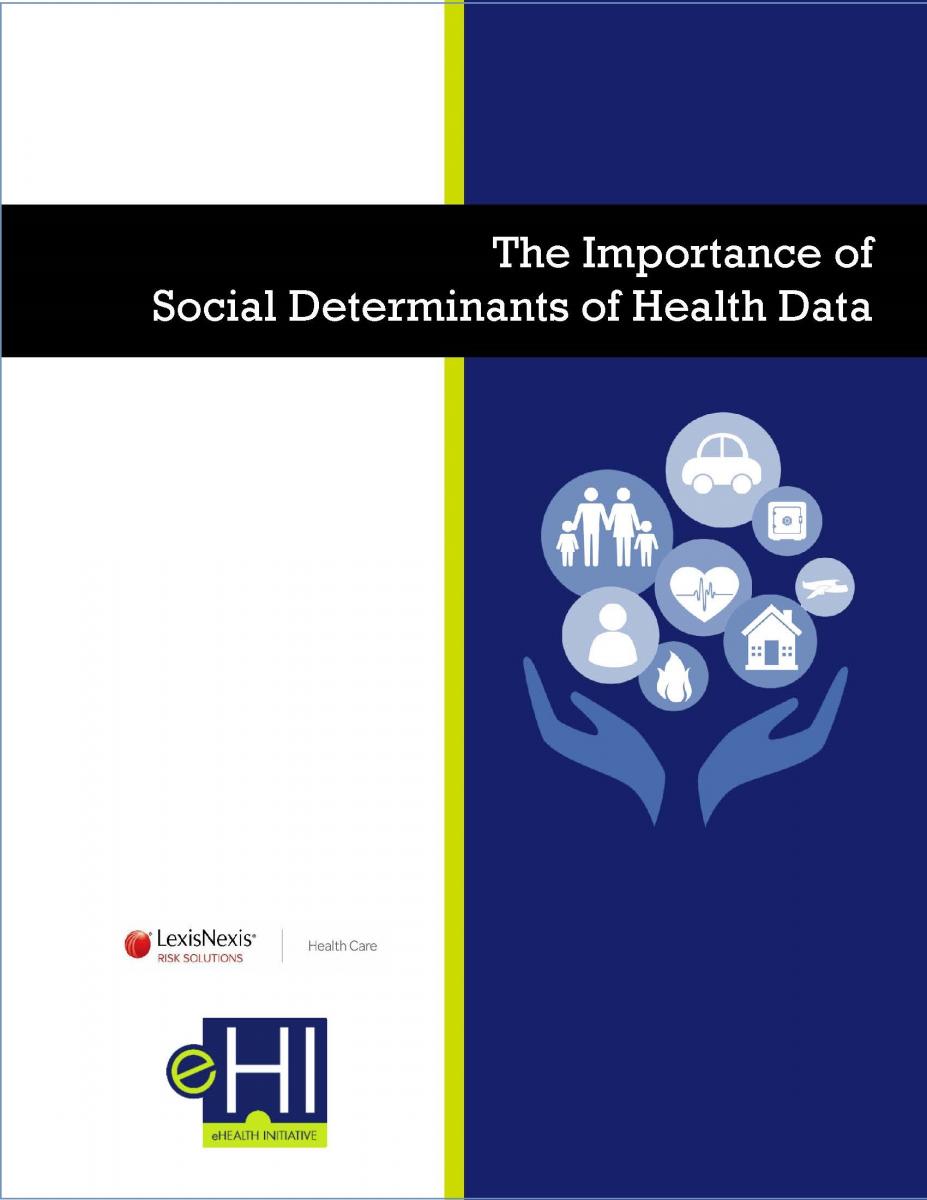 The Importance of Social Determinants of Health Data (SDOH) paper examines different industry approaches to addressing SDOH. The report demonstrates how SDOH data is critical to reducing cost and improving the quality of care provided by today’s healthcare system. In Winter 2018, eHealth Initiative Foundation and the LexisNexis® Risk Solutions healthcare business hosted the second in a series of roundtable meetings on data governance in healthcare. The roundtable focused on data governance from the perspective of Social Determinants of Health (SDOH), convening senior executives from across the healthcare spectrum. The goal of the meeting was to gather expert opinions on the use of SDOH data to benefit patients and providers. Medical care alone has a very limited effect on overall population health and could be significantly enhanced by pairing with approaches that address SDOH.[i] SDOH data is critical to reducing cost and improving the quality of care provided by hospitals and health systems.
The Importance of Social Determinants of Health Data (SDOH) paper examines different industry approaches to addressing SDOH. The report demonstrates how SDOH data is critical to reducing cost and improving the quality of care provided by today’s healthcare system. In Winter 2018, eHealth Initiative Foundation and the LexisNexis® Risk Solutions healthcare business hosted the second in a series of roundtable meetings on data governance in healthcare. The roundtable focused on data governance from the perspective of Social Determinants of Health (SDOH), convening senior executives from across the healthcare spectrum. The goal of the meeting was to gather expert opinions on the use of SDOH data to benefit patients and providers. Medical care alone has a very limited effect on overall population health and could be significantly enhanced by pairing with approaches that address SDOH.[i] SDOH data is critical to reducing cost and improving the quality of care provided by hospitals and health systems.
According to Healthy People, a U.S. Department of Health and Human Services (HHS) initiative providing science-based, 10-year national objectives for improving the health of all Americans, SDOH are conditions in the environments in which people are born, live, learn, work, play, worship, and age that affect a wide range of health, functioning, and quality-of-life outcomes and risks. Examples of social determinants include availability of resources to meet daily needs, such as safe housing and local food markets; access to educational, economic, and job opportunities; access to health care services; quality of education and job training; availability of community-based resources in support of community living; opportunities for recreational and leisure-time activities; transportation options; public safety; social support; social norms and attitudes, such as discrimination and racism; exposure to crime, violence, and social disorder; socioeconomic conditions, including concentrated poverty and the stressful conditions that accompany it; residential segregation; language and literacy; access to mass media and emerging technologies (e.g., cell phones, the Internet, and social media); and culture.[ii]
Can social robots help children in healthcare contexts? A scoping review
Can social robots help children in healthcare contexts? A scoping review
This review identified 73 studies that explored the use of social robots for children in healthcare applications. Robots were used to serve a range of purposes, including a companion role, teacher/coach, to connect unwell children to school and to assist in therapeutic and educational endeavours. The wide range of target populations highlights many potential applications, in particular for children with disabilities, impairments, and diabetes, who require intensive ongoing care. Although hospitalisation is not necessarily long term, anxiety, pain and distress are often heightened during hospitalisation. There are potential benefits of using social robots if they can help reduce burden in all three of these contexts. Some of the key findings suggest that social robots can help children with diabetes to improve knowledge; reduce anxiety, anger and depression in children with cancer, and engage children with cerebral palsy in exercises to help improve physical functioning.
The humanoid NAO robot was the most widely used, likely due to its commercial availability, ability to be personalised and relatively autonomous capabilities. Its size and appearance makes it appropriate and appealing. The level of control of robots ranged from almost fully autonomous, to entirely controlled by a human operator. There is a clear need for technological developments to increase the autonomy of all of the robots, particularly in speech recognition and speech production.
The results highlight the significant promise and potential held by social robots to help children in healthcare, but demonstrate the need for more and higher quality research. In particular, more randomised control trials (RCTs), experimental designs and longer-terms studies are required, with larger sample sizes. There is considerable excitement surrounding the use of robotics in healthcare, but there remains a long way to go in terms of technological developments, integration into the healthcare system and establishment of effectiveness.
The full article can be downloaded below.

